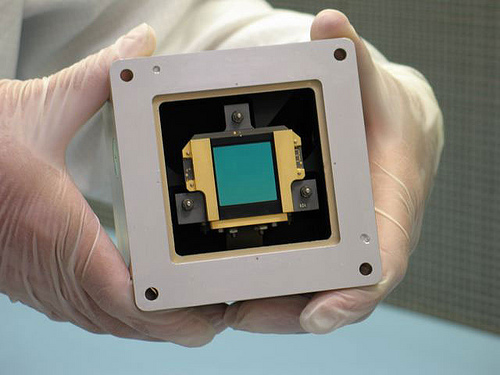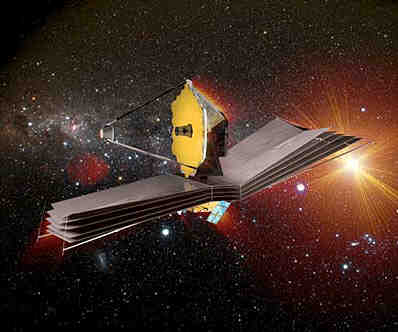The first of four instruments for the embattled James Webb Space Telescope – NASA’s planned next-generation space telescope – has successfully completed cryogenic testing at the U.K. Science and Technology Facilities Council’s RAL Space in Oxfordshire. In other words, it has been tested at extremely low temperatures, designed to mimic temperatures in harsh outer space.
The camera and spectrometer – called the Mid-InfraRed Instrument (MIRI) – are designed to study Kuiper Belt objects orbiting past Pluto in our own solar system, in addition to faraway exoplanets, centers of star birth, and still-forming galaxies.
Read more about the Webb Telescope from senior project scientist and Nobel Prize winner John Mather
A team of more than 50 scientists from 11 countries tested MIRI for 86 days, which was the longest and most exhaustive testing at cryogenic temperatures of an astronomy instrument in Europe, before delivery for its integration into a spacecraft.
MIRI “sees” mid-infrared light emitted by vibrating atoms; the warmer something is, the more infrared is released. Everything emits infrared light – including the James Webb Space Telescope itself – and so the telescope and its instruments must be kept at incredibly cool temperatures. According to a European Space Agency (ESA) press release, MIRI performed well in more than 2,000 individual tests at -446.8 degrees Fahrenheit, or 7 degrees Kelvin – that is, 7 degrees above absolute zero, the theoretical temperature at which all motion stops, including the vibration of atoms. According to the press release:
The tests ensured that all parts of the instrument function together properly. Targets inside the test chamber were used to simulate scientific observations and obtain critical performance data. Astronomers will use these during the coming years to develop software needed to calibrate the instrument after launch.

Image Credit: STFC/RAL Space/NASA
MIRI must be kept colder than Webb’s three other instruments, because it sees the farthest into the infrared. Two pumps will supply MIRI with warmth-absorbing gas, much like a refrigerator. The telescope’s open design, unlike most telescopes’ tube-shaped form, allows space itself to help keep everything ultracold. Otherwise, the telescope would run out of coolant faster, shortening its useful life. The James Webb Telescope also uses a sunshield the size of a tennis court.
MIRI’s construction is a collaboration of the MIRI Consortium, consisting of a group of European scientists working with the ESA and NASA, a team from NASA’s Jet Propulsion Laboratory in California, and various other U.S. scientists. The instrument will soon be on its way to NASA’s Goddard Space Flight Center in Greenbelt, Maryland to undergo more testing with the telescope’s entire science instrument payload.
Webb’s other instruments include a Near Infrared Camera (NIRCam), which will work with light in the near infrared range; the Near-Infrared Spectrograph (NIRSpec), the Webb’s only spectrograph (an instrument that splits light into its different wavelengths), capable of observing over 100 objects at once; and the Fine Guidance Sensors-Tunable Filter (FGS-TF), a two-part instrument that will analyze the chemical composition of other atmospheres and help point the telescope at various objects, among other functions.

John Mather, Nobel laureate and Webb senior project scientist at NASA Goddard, said:
Thousands of astronomers will use the Webb telescope to extend the reach of human knowledge far beyond today’s limits. Just as the Hubble Space Telescope rewrote textbooks everywhere, Webb will find new surprises and help to answer some of the most pressing questions in astronomy.
Bottom line: The Mid-InfraRed Instrument (MIRI) – one of four instruments planned to fly aboard the James Webb Space Telescope – has completed cryogenic testing at a lab in the U.K. It’s now on its way to NASA’s Goddard Space Flight Center in Maryland to undergo more testing with the telescope’s entire suite of instruments. The Webb Space Telescope itself is now awaiting a date on which the House will vote on continuation of its funding, as scientists push forward with its development. Advocates of the telescope plan for a launch date of 2018. To learn more about the telescope and its development, visit STScI’s James Webb Space Telescope website or NASA Goddard’s James Webb Space Telescope resource center.
James Webb Space Telescope in financial limbo, but science pushes on
Support page for James Webb Space Telescope, including “tell-a-friend” and “write to Congress” web widgets, tools for contacting the media and politicians, and email alerts on telescope news.











